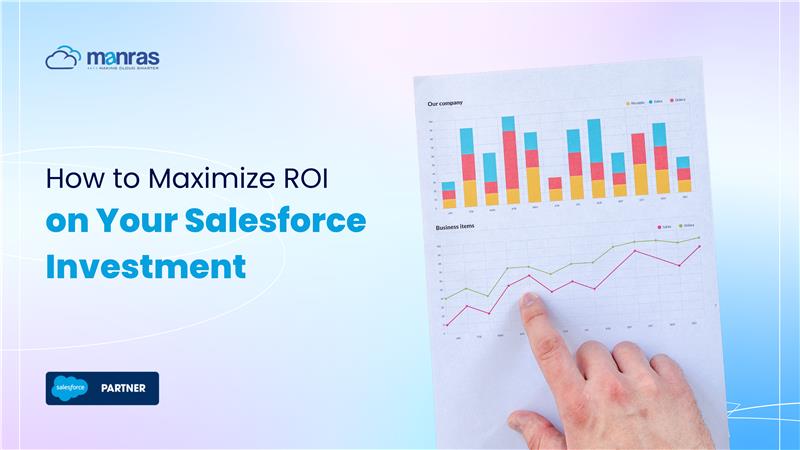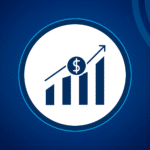
How to Maximize ROI on Your Salesforce Investment
If you’ve invested in Salesforce but aren’t seeing the returns you expected, you’re not alone. Many businesses struggle to achieve Salesforce ROI optimization because they don’t fully utilize the platform’s capabilities. Whether it’s poor user adoption, messy data, or lack of customization, these challenges prevent you from getting the most out of your CRM. But the good news? With the right approach, you can maximize CRM investment and see measurable improvements in sales, marketing, and customer service.
In this article, we’ll explore how you can increase CRM efficiency and improve Salesforce performance to maximize your return on investment.
Why Does Salesforce ROI Optimization Matters?
Salesforce is meant to improve processes, increase customer relations, and grow the business. Yet, without a strategy, it can quickly become just another tool with no value. With Salesforce ROI optimization, the investment is guaranteed to generate higher revenue, boost customer satisfaction, and improve overall business operations. The most important thing is to make sure Salesforce is integrated with your business objectives and keep optimizing how it works.
Common Barriers to Maximizing CRM Investment
Before jumping into solutions, let’s address the main reasons businesses fail to increase CRM efficiency:
Low User Adoption
User adoption is one of the major hurdles to Salesforce ROI optimization. If employees do not fully embrace the platform, it is an underutilized opportunity. Some of the common reasons for the low adoption are a lack of adequate training, resistance to change, or a complex user interface. When teams don’t use Salesforce, data is partial, workflows are rarely followed and productivity takes a hit.
Poor Data Quality
Salesforce is only as good as the data you feed into it. If your CRM is filled with inaccurate, incomplete, or duplicate data, your decision-making process becomes flawed. Poor data quality leads to unreliable reports, incorrect forecasting, and inefficiencies in customer interactions. Without clean, well-maintained data, it’s nearly impossible to improve Salesforce performance and get meaningful insights.
Lack of Customization
Every business operates differently, but many companies use Salesforce with a generic, one-size-fits-all setup. When Salesforce isn’t customized to match your specific workflows, teams struggle to navigate the system efficiently. This lack of alignment prevents you from fully utilizing automation, analytics, and other powerful CRM features. Without customization, your CRM may feel more like a burden than a tool designed to maximize CRM investment.
Inefficient Processes
Salesforce is designed to streamline operations, yet many businesses still rely on manual processes that slow them down. Tasks such as data entry, lead tracking, and report generation can be automated, but without the right configurations, businesses miss out on time-saving opportunities. These inefficiencies reduce productivity and prevent teams from focusing on high-value activities that drive revenue and customer engagement.
Recognizing these challenges is the first step. Now, let’s explore how to tackle them and truly improve Salesforce performance.
Strategies to Maximize CRM Investment and Increase Efficiency
To make Salesforce work for your business, you need a structured approach. Here’s how to maximize CRM investment and ensure a higher return:
Prioritize User Adoption
Even the best CRM won’t deliver results if your team doesn’t use it properly. To ensure high adoption rates:
- Invest in Training: Conduct regular workshops to familiarize employees with Salesforce’s features.
- Simplify the Interface: Customize dashboards and fields so that users see only what they need.
- Automate Repetitive Tasks: Free up employees’ time by letting Salesforce handle data entry and follow-ups.
By making Salesforce intuitive and easy to use, you naturally increase CRM efficiency and encourage adoption.
Improve Data Quality
A CRM is only as good as the data inside it. To ensure Salesforce ROI optimization, focus on:
- Standardizing Data Entry: Establish clear guidelines to prevent errors and inconsistencies.
- Regular Data Audits: Cleanse and update records to remove duplicates and outdated information.
- Integrating Data Sources: Connect Salesforce with other tools to maintain a unified database.
Better data quality means better insights, which leads to smarter decision-making and improved sales and marketing outcomes.
Customize Salesforce to Fit Your Business Needs
Salesforce isn’t a one-size-fits-all solution. To truly improve Salesforce performance, tailor it to your specific workflows:
- Optimize Workflows: Automate approvals, lead assignment, and sales tracking to boost productivity.
- Personalize Dashboards: Ensure each team has access to relevant reports and KPIs.
- Leverage AppExchange: Use third-party integrations to enhance Salesforce functionality.
Customization ensures that Salesforce works for your business, not the other way around.
Leverage Automation and AI
Automation is a game-changer for increasing CRM efficiency. By reducing manual work, you free up time for more strategic tasks.
- Use AI for Sales Forecasting: Predict customer needs and improve targeting.
- Automate Email Campaigns: Keep leads engaged without manual intervention.
- Set Up Auto-Responses for Customer Service: Improve response times and customer satisfaction.
With automation, you can maximize CRM investment while making your teams more efficient.
Key Metrics to Measure Salesforce ROI
How do you know if your Salesforce ROI optimization efforts are working? track key metrics like lead conversion rates, deal closures, and sales cycle length for sales. Monitor campaign effectiveness, lead costs, and engagement for marketing. For customer service, focus on response time, case resolution, and retention rates. Regularly analyzing these helps improve Salesforce performance and increase CRM efficiency for better returns.
Overcoming Common Challenges in Salesforce Implementation
Even with the best practices in place, some challenges can slow your progress. Here’s how to address them:
- User Resistance: Create an incentive program to encourage adoption.
- Data Silos: Integrate all your business tools with Salesforce to enable seamless data sharing.
- Overcomplicated Customization: Avoid unnecessary modifications that make Salesforce harder to use.
By tackling these obstacles head-on, you ensure that your CRM delivers long-term value.
Conclusion
Your Salesforce investment should drive measurable business growth, not just serve as a digital filing cabinet. The key to Salesforce ROI optimization is a combination of high user adoption, clean data, smart customization, and automation. When done right, these strategies will increase CRM efficiency, enhance productivity, and improve Salesforce performance.
If you’re looking for expert guidance on optimizing your Salesforce setup, Manras can help. As a Salesforce-certified consultant, Manras offers specialized services to help businesses refine their CRM strategies, ensuring better user adoption, cleaner data, and smarter customization.
For more insights, updates, and expert tips, follow us on LinkedIn.



